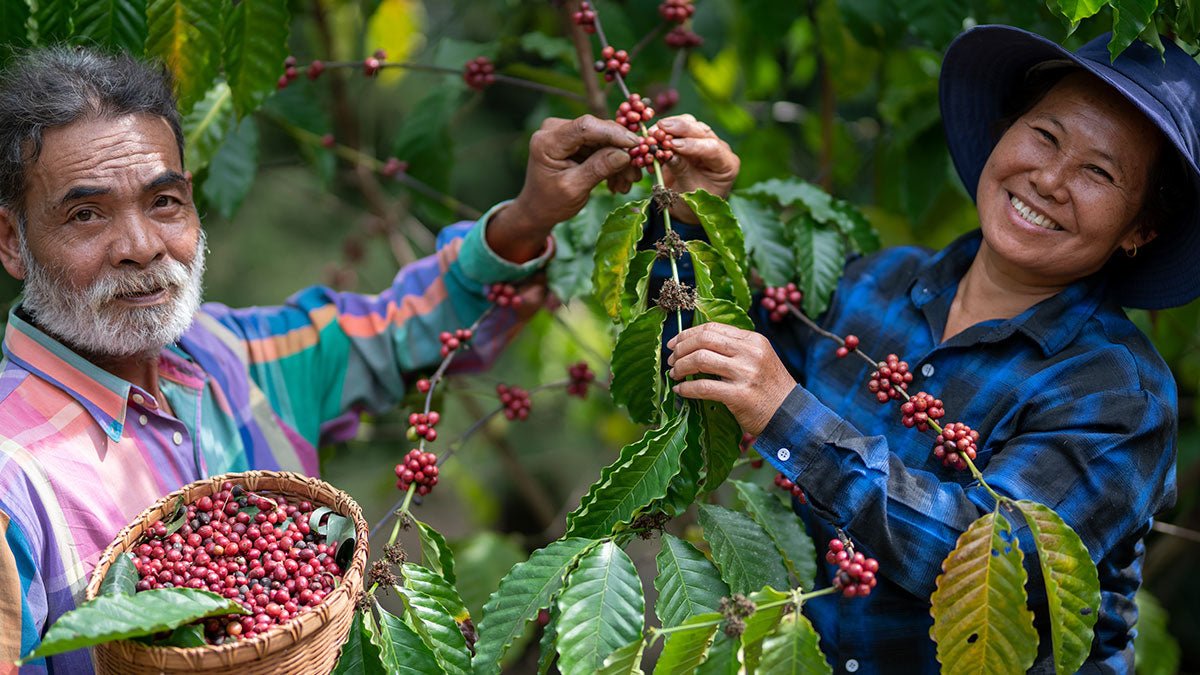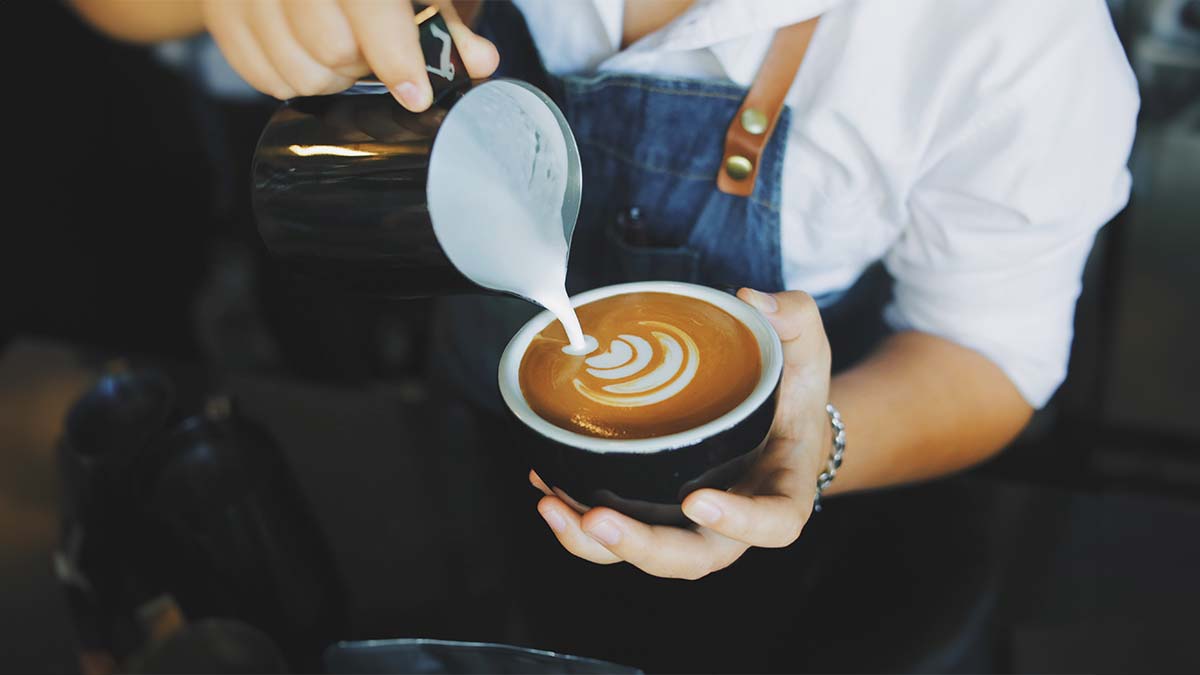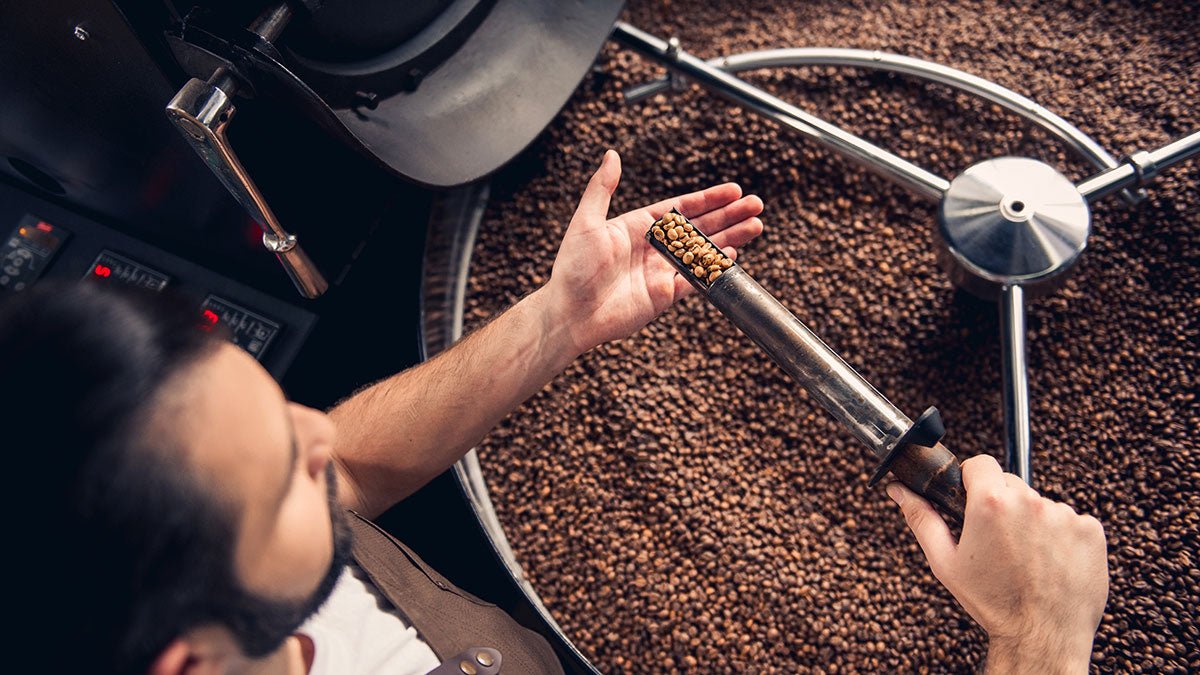Introduction: Why Choosing Coffee Beans Can Be Confusing
Coffee can feel like one of the most complex items to purchase. When you’re faced with bags labeled with vague descriptions like “light roast” or “single origin” and prices ranging from $10 to $75, it’s easy to wonder: What’s the real difference, and how do you find the best coffee beans for your taste?
In this guide, we’ll break down the essentials—from how coffee beans are processed and roasted to tips on tasting and choosing flavors you’ll love. This knowledge will give you the foundation to enjoy every sip, regardless of your brewing method or experience level.
1. Breaking Down Coffee Bean Prices: From Commodity Coffee to Specialty Brews
The price of coffee beans isn’t just about roasting or branding—it’s a product of each stage in the coffee-making process. Generally, coffee falls into three price categories: commodity coffee, mass-market coffee, and specialty coffee. Each category reflects a different level of quality, processing, and production cost.
Commodity Coffee
Brands like Folgers and Maxwell House are mass-produced, often using robusta beans (which are cheaper to grow) and automated production methods. These coffees are generally less complex in flavor, with an emphasis on consistency and affordability over quality.
Mass-Market Coffee
This includes brands like Starbucks or Dunkin’ Donuts. Mass-market coffees are made with a blend of robusta and arabica beans and are designed to suit general tastes. The beans may be sourced from multiple farms and countries, aiming for consistent flavor profiles.
Specialty Coffee
Often more expensive, specialty coffee uses high-quality arabica beans, carefully sourced, often through direct trade or fair trade relationships. Specialty beans are roasted in small batches and emphasize origin, flavor notes, and transparency.
2. The Role of Coffee Bean Origin and Type in Flavor
When selecting coffee, understanding the origin and type of bean is crucial. These factors contribute to the unique flavor profile of each coffee, affecting aspects like acidity, body, and aroma.
Coffee Origins
Coffee beans are grown in various regions, primarily in the “coffee belt,” which includes Central and South America, Africa, and Asia. Each region has distinct climate conditions that influence the bean’s flavor.
Single Origin vs. Blend
Coffee labeled “single origin” is sourced from one place, such as a specific farm or region, highlighting the unique flavors of that location. Blends combine beans from multiple origins to create a balanced flavor profile.
Bean Varieties
Just like apples have varieties like Honeycrisp and Gala, coffee has distinct varieties such as Arabica and Robusta, each with unique characteristics.
3. Coffee Bean Processing Methods and Their Impact on Taste
After coffee cherries are picked, they undergo processing to remove the cherry’s outer layers, revealing the green beans inside. This processing has a big impact on taste and aroma. Here are the main methods:
Washed Process
In the washed process, the cherries are pulped, removing most of the fruit before fermentation, then rinsed in water. This results in a cleaner, brighter coffee with more pronounced acidity.
Natural Process
With this method, the whole cherry is dried in the sun before removing the outer layers, creating a fuller body with fruity or berry-like notes.
Honey Process
A mix between washed and natural, the honey process leaves some of the fruit’s mucilage on the bean while it dries, yielding a sweet, smooth coffee with moderate acidity and body.
Anaerobic Fermentation
In anaerobic fermentation, coffee is fermented without oxygen, which produces unique, wine-like flavors with low acidity.
4. How Coffee Roasting Affects Flavor
Roasting is a transformative step in coffee production that shapes each bean’s final flavor profile. During roasting, heat causes chemical reactions in the beans, developing flavors, aromas, and textures unique to each roast level.
Light Roast
Light roasts are heated to a lower temperature, preserving many of the bean’s original flavors, often bright, fruity, and acidic.
Medium Roast
A balanced option, medium roasts feature both the bean’s natural flavors and those produced during roasting, with a fuller body and well-rounded taste.
Dark Roast
Dark roasts are exposed to higher temperatures, creating a rich, intense flavor profile with deep, smoky undertones.
5. Tasting Coffee: Tips for Finding Your Favorite Flavor Profile
The best way to discover which coffee flavors resonate with you is by tasting different beans side by side. This process, called cupping, is a simple way to compare flavors and find what you enjoy.
Start with a Cupping
Cupping involves adding hot water to ground coffee in individual cups, letting the coffee steep, and then slurping it to taste the flavors.
Focus on Differences
Ask your local coffee shop or roaster for two coffees with contrasting profiles to easily identify the qualities you enjoy most.
Experiment with Flavor Profiles
As you explore, note the flavor profiles you prefer, like fruity and floral or chocolatey and nutty, to guide your future selections.
6. Brew Methods and Their Influence on Coffee Flavor
Once you’ve selected your coffee beans, the brewing method you choose can significantly influence the flavors in your cup. Experimenting with different methods can unlock new tastes.
Aeropress
This versatile method combines immersion and pressure, creating a smooth, rich cup with low acidity.
French Press
This full-immersion method allows coffee grounds to steep in hot water, resulting in a fuller body with robust flavors.
Pour-Over
A pour-over method highlights bright acidity and delicate flavors, especially in lighter roasts.
7. Practical Tips for Choosing the Right Coffee Beans for You
Here are some practical tips to help you confidently choose beans you’ll love:
Prioritize Flavor Over Roast Level
Focus on flavor notes you enjoy—like fruity, chocolatey, or nutty—rather than labels like “light” or “dark” roast.
Experiment with Origins and Processing
Try coffees from various origins (like Ethiopia or Colombia) and different processing methods to see how each one influences flavor.
Ask Your Local Roaster
Roasters know their beans well and can recommend varieties based on your taste preferences.
Taste Side-by-Side
Purchase small amounts of different beans and taste them side by side to learn what you enjoy in a cup of coffee.
Explore Single Origin vs. Blends
If you like complex flavors, try single-origin coffees. For a balanced, consistent flavor, a blend might be ideal.
Conclusion: Embark on Your Coffee Journey
Choosing the perfect coffee bean is both an art and a science, with each step— from origin to processing, roasting, and brewing—contributing to your cup’s final flavor. Armed with this guide, you’re ready to explore the world of coffee with confidence.
By tasting side by side and prioritizing flavor profiles over conventional labels, you’ll discover a range of tastes and aromas that suit your preferences. Whether you lean towards bright, fruity Ethiopian beans or rich, chocolatey blends, there’s a whole world of coffee to explore. Enjoy the journey, sip by sip, as you uncover new favorites and deepen your appreciation for this incredible beverage.



